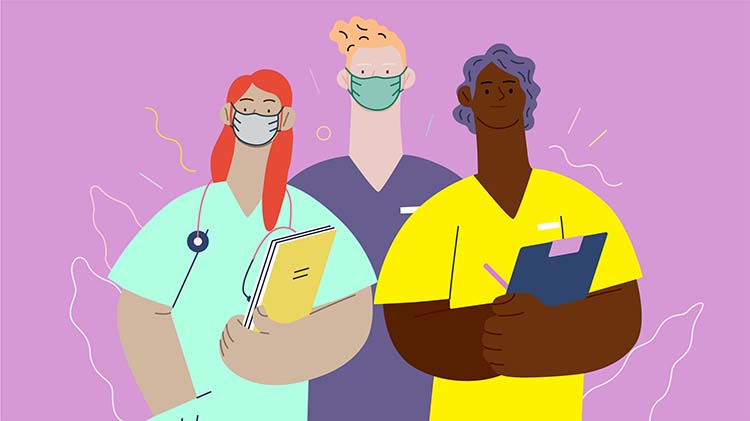Physical examinations how to avoid misunderstandings
07 Dec 2023
Case study
Dr Tan was shocked when his practice manager told him that a complaint had been made about him.
Dear practice manager
I am writing to tell you about an awful experience I had when I saw Dr Tan recently.
I came for a repeat script of the pill, and Dr Tan bullied me into having a cervical screening test (CST). I had never had one before, and I knew I needed to have one, but I was not feeling ready or prepared for it that day. He made me get on the bed, did not explain to me what was happening, and really hurt me with the thing that he used. I begged him to stop, but he said he was nearly finished and kept going. Then he stared at me as I got dressed.
I didn’t even need the test, as the result was normal.
I felt humiliated and very uncomfortable, and I don’t know if I will ever be able to have another.
Yours sincerely
Anne
Dr Tan was initially outraged. He considered that he had given Anne excellent care, as he was aware she was well overdue for her first CST. He recalled she had been a bit reluctant, but he was always keen to ensure patients were participating in appropriate screening programs.
Dr Tan contacted MDA National for advice before replying to Anne. It was suggested that he review the Medical Board of Australia document, Guidelines: Sexual Boundaries in the Doctor–Patient Relationship.
Dr Tan was aware of this document, but thought it was about doctors wanting to have a relationship with patients and therefore didn’t apply to him.
Discussion
As in many aspects of medical care, clear communication is key. Before conducting a physical examination, it should be explained to the patient why the examination is recommended, what information will be obtained, and how the examination will be conducted.
For example, presentation of a female patient with a lump in the axilla would suggest that a breast examination is indicated. This may not be obvious to the patient, and the breast examination may be misinterpreted unless the doctor has explained the reason for the examination.
The patient should be given an opportunity to ask questions about the proposed examination, and the patient can refuse to have the examination.
In this case, Anne felt she was not given the opportunity to refuse the CST. Some patients may need to be emotionally prepared for this examination, and some may not be comfortable with a vaginal examination at all. There is now the option of a self-collected swab for the CST, and this was not discussed with the patient.
During the examination, the doctor should observe the patient and be aware of any verbal or non-verbal signs indicating the patient has withdrawn consent. The doctor should not continue with the examination when consent is uncertain, has been refused, or withdrawn at any time.
The patient should be allowed to undress and dress in private. A suitable covering ‘modesty sheet’ should be provided so that the patient is covered as much as possible, to maintain their dignity. Gloves should be worn when examining genitals or internal examinations.
Guidelines: Sexual Boundaries in the Doctor–Patient Relationship is a very valuable resource, and all doctors should familiarise themselves with the contents. Section 7 contains detailed information regarding conducting a physical examination. Use of observers or chaperones is also discussed.
There is also information regarding maintaining appropriate boundaries with patients. The start of an inappropriate relationship between a doctor and a patient may not always be immediately obvious to either the doctor or patient. Doctors need to be alert to warnings that might indicate boundaries are being, or about to be, crossed.
There are a wide range of behaviours that breach sexual boundaries – from making unnecessary comments about a patient’s body or clothing, to criminal behaviour such as sexual assault.
Dr Tan – Postscript
After reviewing the guidelines, Dr Tan felt there were some aspects of his usual practice that could be improved. The medical practice where he worked conducted regular small group meetings as part of their continuing professional development; and at the next meeting all members of the group reviewed and discussed the document, considered their usual practice, and made some improvements.
MDA National assisted Dr Tan with responding to Anne, and he heard nothing further from her.
Key points
- Sexual misconduct is an abuse of the doctor–patient relationship and can cause significant and lasting harm to patients.
- It is never appropriate for a doctor to engage in a sexual relationship with a current patient.
- A doctor must only conduct a physical examination of a patient when it is clinically indicated, and with the patient’s informed consent.
- Good, clear communication is the most effective way to avoid misunderstandings in the doctor–patient relationship.
- Doctors are responsible for maintaining professional boundaries in the doctor–patient relationship.
Stay updated with the latest medico-legal content |
Subscribe to MDA National’s biannual Member publication, Defence Update, for the latest medico-legal updates, articles and case studies.
Professional boundaries in healthcare - Part 1
Boundaries with patients present in numerous ways every day and all health practitioners
11 Aug 2025
Understanding Professional Medical Indemnity Insurance
Do you understand the ins and outs of professional medical indemnity insurance?
11 Aug 2025
Professional boundaries in healthcare - Part 2
Boundaries with patients present in numerous ways every day and all health practitioners
11 Aug 2025
Understanding changes to the Fair Work Act
What are the changes to the Fair Work Act and what is my role?
22 Jul 2025







